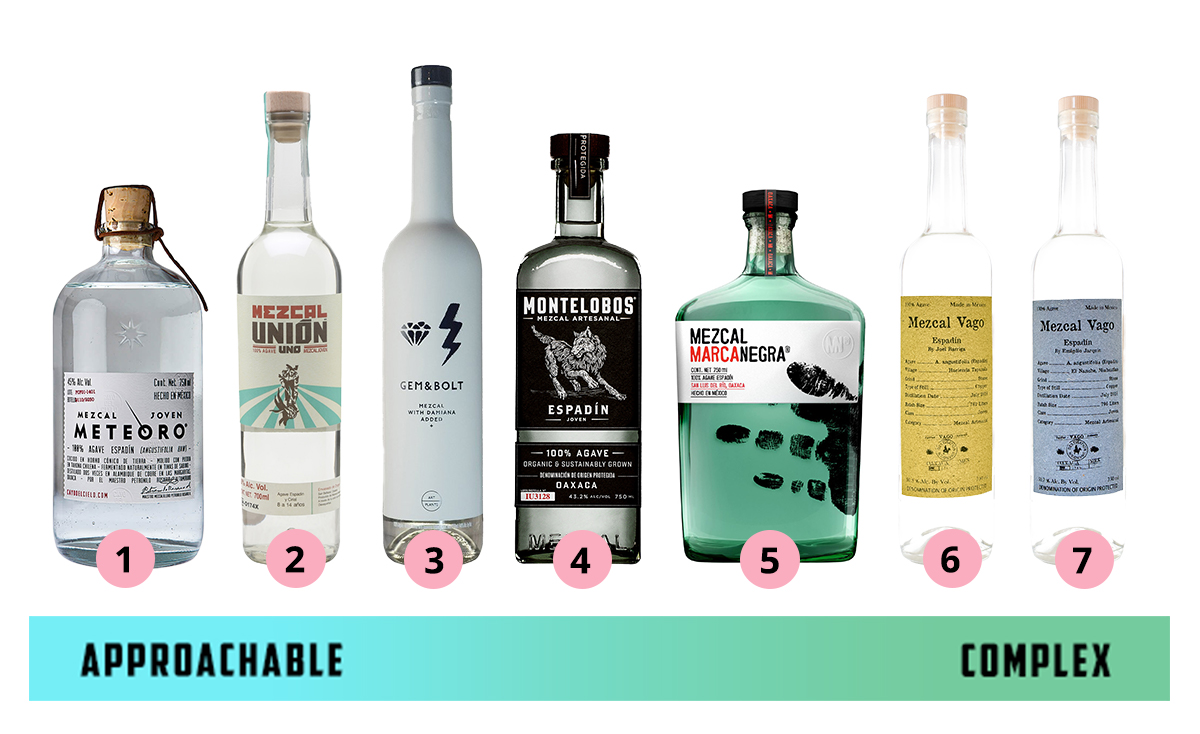Mezcal is no longer a spirit known only by industry insiders.
From 2017 to 2018, the mezcal category grew 32.4% in the U.S. — the largest percentage gain compared to any other spirit category. To put that into perspective, that’s more than of 261,000 nine-liter cases.
Mezcal’s rise in popularity has been happening primarily in the on-premise market, where bartenders were the earliest supporters of the spirit. However, as with anything truly special that is flying under the radar, a moment eventually arrives where it jumps into the mainstream.
For mezcal, that moment is now.
As consumer interest in mezcal grows, questions about mezcal will follow for you and your staff. There’s a lot of misinformation out there about mezcal, so we’ve developed a short guide to help demystify this agave spirit.
Where Does Mezcal Come From?
True mezcal can only be made in one of nine regions of Mexico: Oaxaca, Durango, Guanajuato, Guerrero, San Luis Potosi, Tamaulipas, Zacatecas, Michoacan, and Puebla. Around 80 percent of all mezcals are made in Oaxaca.
What Agaves are Used in Mezcal?
Mezcal can be made from more than 50 different agave varietals. The five most common varietals used are Arroqueño, Espadín, Tobalá, Tobaziche and Tepeztate. Currently, Espadín (also referred to as Angustifolia) accounts for close to 90 percent of all mezcal production.
Each varietal of agave produces a mezcal that has its own unique flavor and aroma. Some agaves create mezcals that are earthy and herbal, while other varietals produce a spirit that is fruity and floral.
Mezcals labeled as Ensemble are made using a blend of different agaves, often with Espadín making up a large portion of the blend.
Are All Mezcals Smokey?
Mezcal can sometimes be challenging to those new to the category because of its reputation as tequila’s smoky cousin. That’s more of a vague claim than a fact, and it doesn’t do any justice to the complexity of mezcal. While all mezcals do have a subtle smoke note — a result of the agave piña’s being roasted in an earthen pit — they are by and large not smoke bombs.
Just like there are a range of flavors and peat levels in Scotch whisky, so too are there ranges of smoke and flavor in mezcal. If you or your customers are new to mezcal, start off with a mezcal that is light, bright and approachable and then work your way to the more complex bottles out there.

How to Create a Mezcal Menu
By Agave Varietal: One of the most common and educational ways to categorize a mezcal menu is to do so by agave varietals. This approach is like how large wine lists are ordered, and it allows your customers the opportunity to experiment
By Region or Palenque: Terroir is a big component to mezcal’s appeal. Featuring your mezcals by region gives customers the chance to compare how drastically different two mezcals can taste despite location and distance being the only difference between them.
By Producer: Organizing your mezcal menu by producer allows customers to deep dive into one producer and experience all their offerings. This works very well for producers who specialize in single village mezcals. Just remember to still provide education on the varietals in addition to the producer-specific arrangement.
No matter how you organize your menu, one thing you should offer are mezcal flights, which is a fantastic way to get your customers to engage with your mezcal selection, while educating them on the complexities of the category.
How to Use Mezcal in Cocktails
Mezcal’s tequila applications are endless. In drinks that traditionally call for tequila, try using mezcal instead to add both complexity and depth to the drink. Check out our Instagram page for more mezcal cocktail recipes.
Will There Be Enough Mezcal to Meet Consumer Demand?
Consumption of mezcal has increased drastically over the past five years, with 288,000 cases depleted in the U.S. in 2018, up from just 65,000 cases in 2013.* There are concerns that an agave shortage could be a real possibility in the future if demand continues to out-pace the years needed for agaves to grow and mature.
As a result, mezcal producers are putting a greater focus on sustainability and conservation: sustainable harvests, sustainable land management and sustainable living wages for the families who have been producing mezcal for generations.
If you’d like to learn more about the sustainability issues surrounding agave spirits, please read our previous reporting on the topic.
Mezcal Key
- Mezcal Meteoro Joven
- Union Mezcal Uno
- Gem & Bolt Mezcal
- Montelobos Mezcal Espadín Joven
- Mezcal Marca Negra Espadín
- Mezcal Vago Espadín by Joel Barriga
- Mezcal Vago Espadín by Emigdio Jarquín